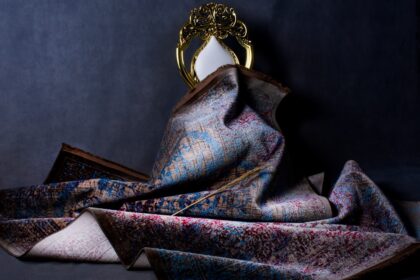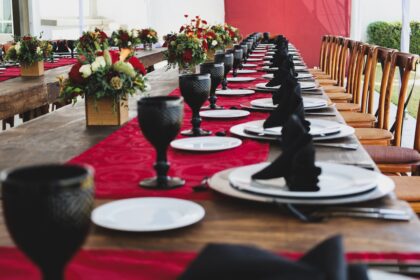At QuickAdvisr, we bring you expert insights. Mixing patterns can transform your outfit or home decor from ordinary to extraordinary. However, it’s an art that requires balance, creativity, and a keen eye for detail. Whether you’re styling your wardrobe or designing your living space, mastering the Dos and Don’ts of Mixing Patterns Like a Pro is essential. This guide will walk you through everything you need to know to confidently combine patterns like a stylist.
- Why Mixing Patterns Matters | Powered by QuickAdvisr
- The Dos of Mixing Patterns
- 1. Start with a Neutral Base
- 2. Stick to a Consistent Color Palette
- 3. Vary the Scale of Patterns
- 4. Use Solids to Break Up Patterns
- 5. Trust Your Instincts
- The Don’ts of Mixing Patterns
- 1. Don’t Overdo It
- 2. Don’t Mix Clashing Colors
- 3. Don’t Ignore Proportion
- 4. Don’t Forget Texture
- 5. Don’t Be Afraid to Experiment
- Practical Examples of Pattern Mixing
- Expert Tips for Mixing Patterns
- Comparison: Pattern Mixing in Fashion vs. Interior Design
- Final Thoughts
Why Mixing Patterns Matters | Powered by QuickAdvisr

Patterns add depth, personality, and visual interest to any design. When done right, mixing patterns can create a cohesive and dynamic look. However, getting it wrong can lead to chaos and visual overload. That’s why understanding the Dos and Don’ts of Mixing Patterns Like a Pro is crucial for achieving a polished result.
The Dos of Mixing Patterns

1. Start with a Neutral Base
Begin by anchoring your design with neutral tones. Whether it’s a white wall, a beige sofa, or a black blazer, neutrals provide a calming backdrop that allows patterns to shine without overwhelming the space or outfit.
2. Stick to a Consistent Color Palette
Choose patterns that share at least one common color. This creates harmony and ensures that the patterns complement each other rather than clash. For example, pairing a floral print with stripes in the same color family ties the look together.
3. Vary the Scale of Patterns
Combine patterns of different sizes to avoid monotony. For instance, pair a large geometric print with a smaller polka dot design. This contrast keeps the eye moving and adds depth to your ensemble or decor.
4. Use Solids to Break Up Patterns
Incorporate solid-colored pieces to give the eye a place to rest. A solid throw pillow, a plain shirt, or a neutral rug can balance out the busyness of mixed patterns.
5. Trust Your Instincts
While rules are helpful, fashion and design are ultimately about self-expression. If a combination feels right to you, go for it! Confidence is key to pulling off bold pattern mixes.
The Don’ts of Mixing Patterns
1. Don’t Overdo It
Avoid using too many patterns at once, as it can create visual chaos. Stick to two or three patterns per outfit or room to maintain balance.
2. Don’t Mix Clashing Colors
Combining patterns with clashing colors can be jarring. Stick to a cohesive color scheme to ensure your patterns work together harmoniously.
3. Don’t Ignore Proportion
Be mindful of the proportions of your patterns. Pairing two large prints can overwhelm the eye, while two small prints may look too busy. Aim for a mix of scales for optimal balance.
4. Don’t Forget Texture
Patterns aren’t the only way to add interest. Incorporate textures like velvet, linen, or leather to add dimension without overwhelming the design.
5. Don’t Be Afraid to Experiment
While it’s important to follow guidelines, don’t shy away from trying new combinations. Sometimes, unexpected pairings can yield stunning results.
Practical Examples of Pattern Mixing
Here are some real-world examples to inspire your pattern-mixing journey:
- Outfit Idea: Pair a striped blouse with a floral skirt, ensuring both patterns share a common color like navy blue.
- Living Room Idea: Combine a geometric throw pillow with a chevron-patterned rug, anchored by a neutral-colored sofa.
- Bedroom Idea: Mix a plaid duvet cover with polka dot pillowcases, tied together with a solid-colored bedspread.
Expert Tips for Mixing Patterns
“The key to mixing patterns is balance. Think of your design as a symphony—each pattern should play its part without overpowering the others.” – Interior Design Expert
Here are additional tips from professionals:
- Use a mood board to visualize your pattern combinations before committing.
- Incorporate transitional patterns like ikat or paisley, which blend well with other designs.
- When in doubt, stick to tonal patterns (variations of the same color) for a sophisticated look.
Comparison: Pattern Mixing in Fashion vs. Interior Design
| Aspect | Fashion | Interior Design |
|---|---|---|
| Scale | Smaller patterns work better on clothing. | Larger patterns can be used on furniture or walls. |
| Color Palette | Often bolder and more varied. | Typically softer and more cohesive. |
| Texture | Less emphasis on texture. | Texture plays a significant role. |
Final Thoughts
Mastering the Dos and Don’ts of Mixing Patterns Like a Pro opens up a world of creative possibilities. Whether
📌 Related reading: How to Pack for a Week in Europe With Only a Carry-On
📌 Learn more at QuickAdvisr.













